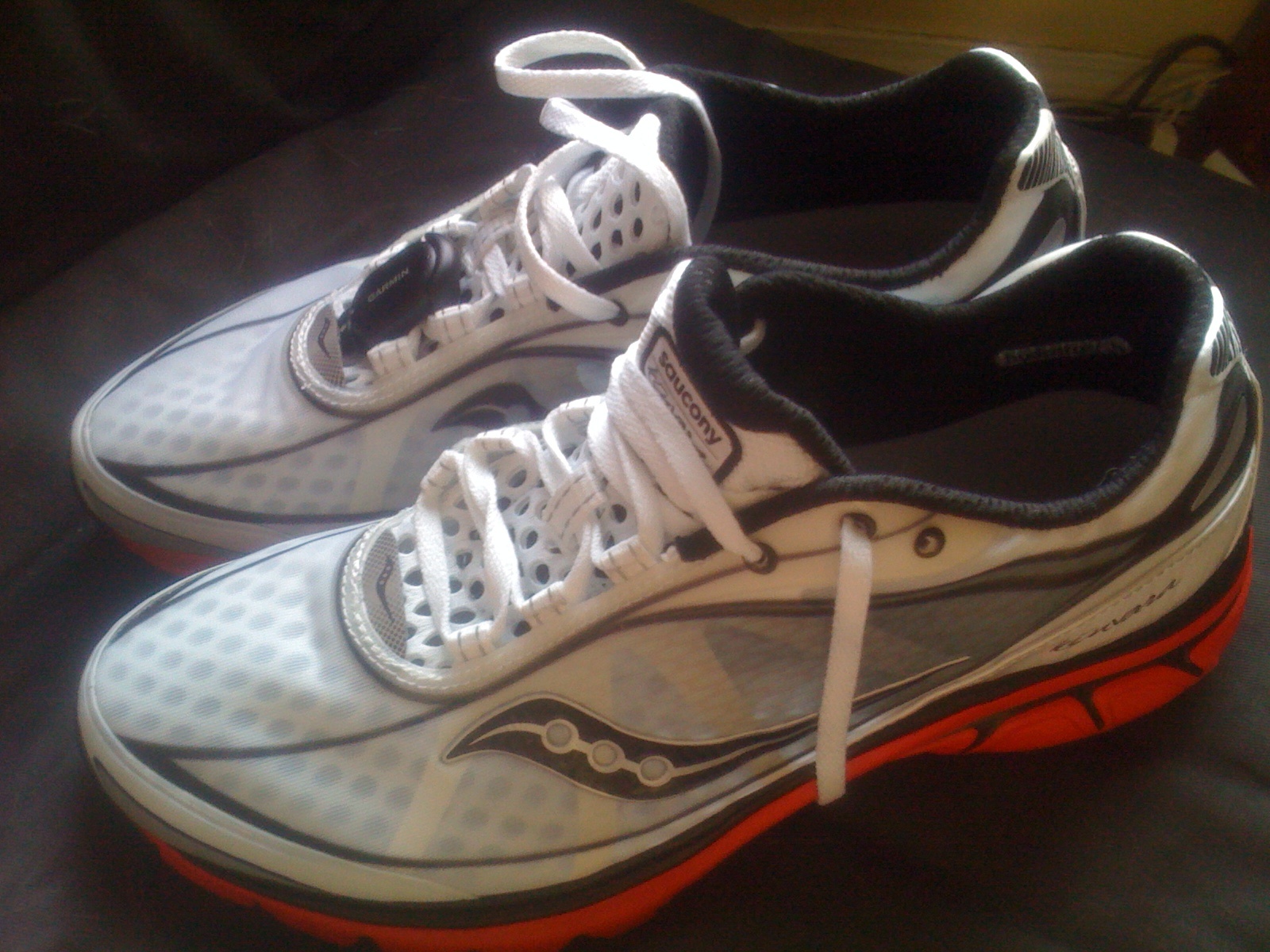
Kinvara!
I came home from Sports Basement Friday with a pair of Saucony Kinvaras. The Kinvara is Saucony’s new «minimalist» shoe intended to be lightweight with a low heel, flexible sole and no support or stability features. With all the talk about the benefits of barefoot running (and the studies that suggest that fancy, high-tech shoes may actually cause more injuries than they prevent) running shoe companies are scrambling to sell shoes on the promise that their shoes approximate the experience and mechanics of running barefoot.
Talk about the emperor’s new clothes, right? But shoes aren’t by themselves necessarily badwhile the human foot may adapt very easily to most kinds of terrain, there’s all sorts of stuff in the urban environment that no one wants to step on.
Barefoot running enthusiasts scoff at the claims that this new generation of running shoes are at all like bare feet. I can see both sides of the argument. They clearly are not barefoot, but they don’t feel like wearing a shoe, either. The Kinvaras are light and flexible and air flows easily through the mesh they are almost totally made of. Wearing the Kinvaras feels almost like wearing slippers. They may be a product of the evil shoe industry but they feel super nice. I joked when I tried them on that I was halfway considering going to bed with them on. In fact, I did take a nap with the Kinvaras on my feet, but I didn’t plan toI just fell asleep on the recliner.
The sales experience at Sports Basement was positive. After I tried on the Kinvaras I pointed to the «we do gait analysis» sign and asked for the salesperson’s analysis. He did not do anything like a thorough analysis, but he told me that I am not a supinator as I had thought (judging by my tread wear patterns) but a mild pronator. He and I had talked about my shoe history earlier and so I asked him what his «diagnosis» meant for my choice of shoe.
He said, «if you buy into the idea that you need shoes to correct for your feet’s habits, you should keep on with the stabilizing shoes. But if you want to avoid injury by improving your form and letting your feet develop better habits, you’ve already made a good choice,» meaning the Kinvaras.
He also cautioned me not to jump right in to running in these full time. He suggested I alternate with my old shoes. I’ll do that if I can resist the allure.
This first run in the Kinvaras didn’t go so well as I’d hoped. I spent most of the run adjusting my stride and footfall patterns. I’m trying to keep my cadence up to about 180 footfalls per minute, focusing on pulling my rear foot up and trying to land with my weight on the forefoot. I’ve been told not to run on the balls of my feet but I’m not really sure how else to allow the arch of my foot absorb the impact so that my knees don’t take the brunt of it.
I also haven’t run as much this week and started the run off by going uphill. That may have been part of it. In any case, I broke down and took a walk break before I got to the top of Potrero. The whole run felt like a struggle. I don’t think I can attribute it to the shoes; it just felt like I had an off day.
I did notice that downhill running is easier in the Kinvaras. With a less-pronounced heel than most running shoes (4mm difference between the thickness of the sole at the heel and at the forefootmost running shoes have more like an 18mm difference) it didn’t feel like I was smashing my heel into the pavement with every step, and running downhill is easier on my knees than it ever has been. That by itself makes the Kinvaras worth the price (MSRP $90.00 and I paid $64.00) so long as there is no hidden disadvantage to running with them.